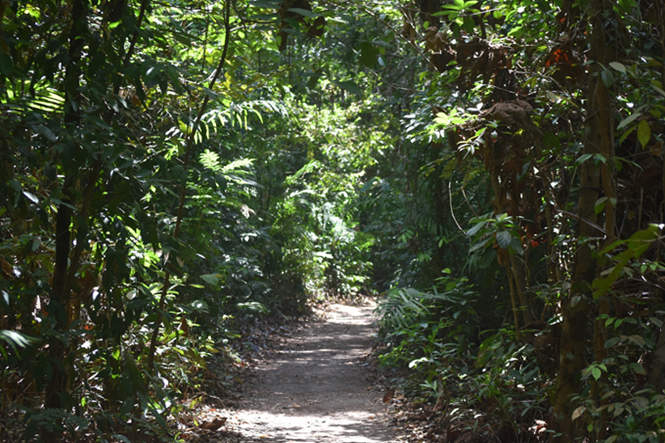Between January 2023 to July 2023, 18 nature enthusiasts representing BES Drongos participated in the Youth Stewards for Nature, a 6 months long program hosted by NParks which aims to hone practical nature-based knowledge and instill environmental awareness among individuals aged between 18 – 25. Among the ongoing projects allocated to various teams that signed up for YSN, BES Drongos was tasked with crafting 2 nature guide books – one for the terrestrial ecosystem and the other for the intertidal ecosystem. The aim of the guidebooks is to help locals gain interest and knowledge about Singapore’s flora and fauna. Over the span of 6 months, the teams diligently discussed the flow and narrative of the guide books over online and physical meetups, in order to cater better to the general public. To create a more immersive experience for the teams, our YSN coordinators brought us to nature parks and intertidal regions throughout Singapore. By observing nature first hand, we were able to gain inspiration for the guide book content.
The terrestrial group visited Springleaf Nature Park and Thomson Nature Park. At Springleaf Park, we saw common plants like Ixora, red tree vine and peacock flower, as well as bulbuls and sunbirds. At Thomson Nature Park, we spotted several common, yet interesting creatures such as the greater racket-tailed drongos, long-tailed macaques and collared kingfishers. Along the trails were lined with endless stretches of flora such as the fig trees, African tulip, common Mahang, and many more. It was intriguing listening to our YSN mentor give us an in-depth explanation about the synergistic behaviours between species, and how ecosystem dynamics were shaped by these interactions.
On the other hand, the intertidal group visited Changi Carpark 6, which is a well known intertidal spot in Singapore among nature enthusiasts. Waddling through the beach at low tide, we spotted sea cucumbers, sea stars, sea snails, including the more elusive hermit crabs. Not to forget as well, corals and seagrass beds were a common sight. Our YSN mentor reminded that intertidal biodiversity is important since they serve as a breeding ground for migratory sea birds, and protect coastlines against storms.
After 6 months of gruelling research, the teams consolidated a list of terrestrial and intertidal flora and fauna in our nature guide books. At the end of the program, along with other YSN team, we had the opportunity to present our guidebooks to Minister Desmond Lee, NParks CEO Ms Hwang Yu-Ning, other NParks staff and youths. We were heartened to hear that our guidebooks are serving an important role in education, especially in a time where more Singaporeans are out venturing our nature areas and intertidal zones. We hope to equip guides with the necessary skills, knowledge and etiquette when in nature.
P.s. We would like to thank our YSN mentors- Ryuta Tan, Samantha Lai, Alyssa Li, Rebecca Loy, and Kwan Mei Yen, for their patience in guiding us for this project.
You can access our terrestrial and intertidal guidebook using the respective links below!!
Terrestrial: https://www.canva.com/design/DAFcqvUwvLE/-aJBBBrtbyi6IeUY5Vo0fw/edit?utm_content=DAFcqvUwvLE&utm_campaign=designshare&utm_medium=link2&utm_source=sharebutton
Intertidal: https://www.canva.com/design/DAFbfZ3BT5w/NCswI7uv37tQffRx0xk_ZQ/edit?utm_content=DAFbfZ3BT5w&utm_campaign=designshare&utm_medium=link2&utm_source=sharebutton
















